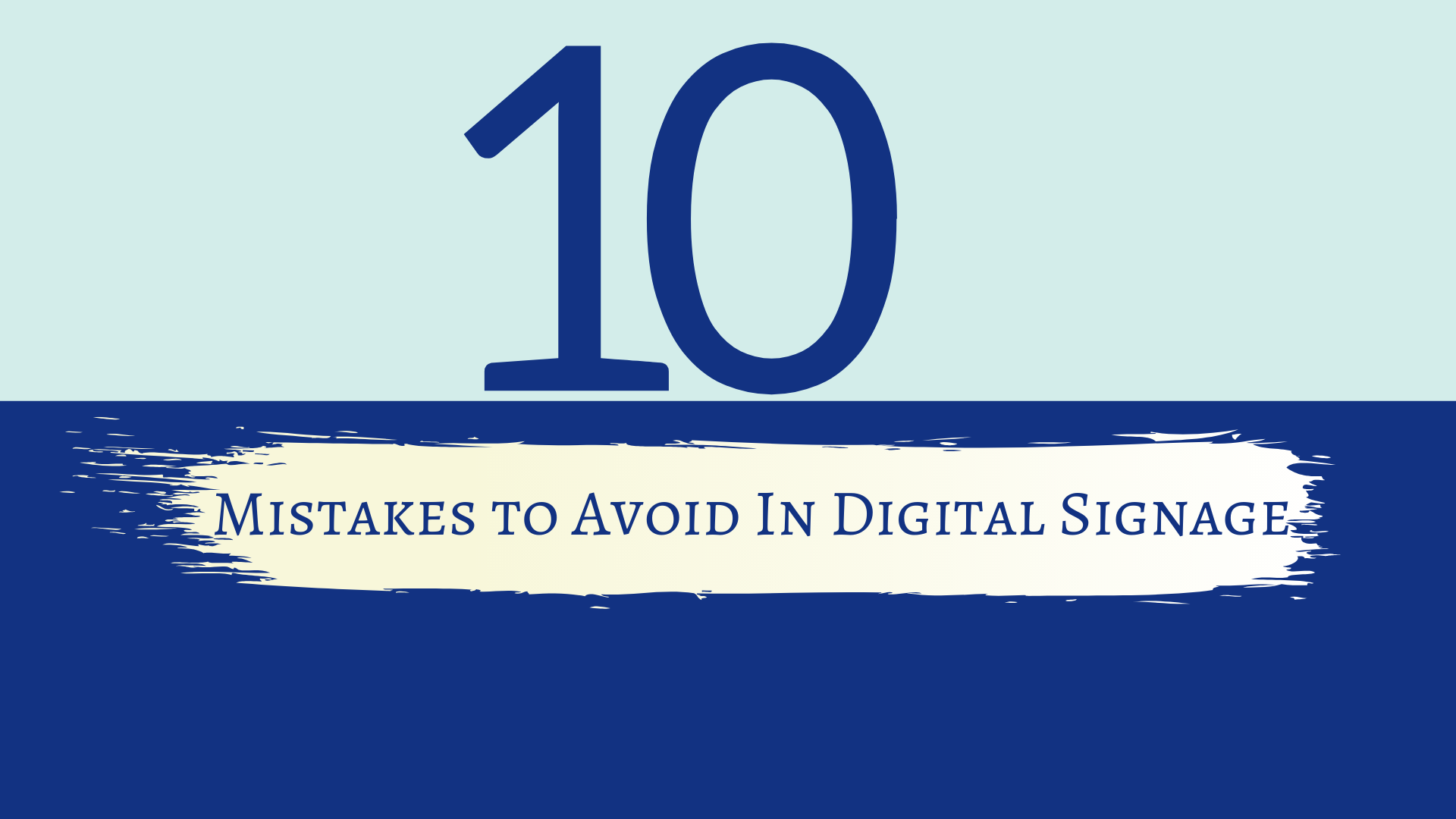
Setting up a signage network might sound easy but the range of hardware and the ever ending list of software providers can be too much to digest for a first-time researcher. Setting up a network and then deciding to change the software or hardware is a situation anyone wants to avoid. To help you there, here are the most common mistakes we have come across while interacting with companies trying to set-up a signage network.
1. No Auto-Update: If the Digital Signage Software cannot auto-update itself, it’s a deal-breaker. Not just the software, ensure the media box has a mechanism to provide access to the software provider to auto-update. Assume having to manually update the software in 100’s of displays in multiple locations, it’s going to be a nightmare without auto-update facility.
2. Selecting a cheaper android media box: Cheaper might be more expensive in some cases. Always, check with the software provider about the hardware to be purchased or vice versa.
3. Not thinking about scalability: Not all signage platforms provide scalable solutions. It’s easy to manage a couple of displays with any CMS but very few have smart process flows to manage content across 1000’s of displays effectively. It can cost you a lot of time and energy if the signage software is not selected right.
4. Setting up and forgetting about the network: Content is the most important thing. Regular updates with attractive creatives are essential for a successful ROI on the signage network. Better to select a Signage platform that provides free apps that update content on its own like Social Media Apps, Web URL, RSS feeds, Streams, Live TV etc as the content can remain fresh even without regular updates.
5. Using remote to Turn-ON a display: Few displays need to be turned on using a remote and this should be avoided if you are not prepared to manually turn on the display every morning or in cases of power cut. You need not worry about this aspect if you are purchasing a commercial display. Also, consumer displays if used for signage purposes, the warranty on the hardware gets voided.
6. Selecting the hardware first and then the software: For a new installation, it’s best to first decide on the software and then proceed ahead with the hardware selection as most software providers would guide you in choosing the perfect hardware.
7. On-Premise for every requirement: Choosing cloud-based software will provide you the flexibility to pay as you go instead of paying up front. Unless you are required to meet government regulations or compliance, on-premise is not essential. In any case, you prefer an on-premise, try the trial version of software thoroughly before proceeding ahead.
8. Just looking for a CMS rather than a wholesome Signage Platform: Select a signage platform rather than just a CMS. Because a platform provides CMS, Device management & Control and Content creation which comes in handy for most signage networks
9. Selecting a media-box without RTC: If Proof Of Play Reports are mandatory for running your Digital Signage business, choose a hardware with RTC (Real Time Clock). This will ensure POP reports are generated even when offline as the media box can provide the time without internet as well. Another added advantage with RTC is the schedules would run offline too.
10. Having all features but ignoring Stability: Finally, the stability of the signage network is the most important aspect without which none matters. Both hardware and more so the software plays an important role in determining this. Check software reviews, test thoroughly and make a decision accordingly.
Leave a Reply